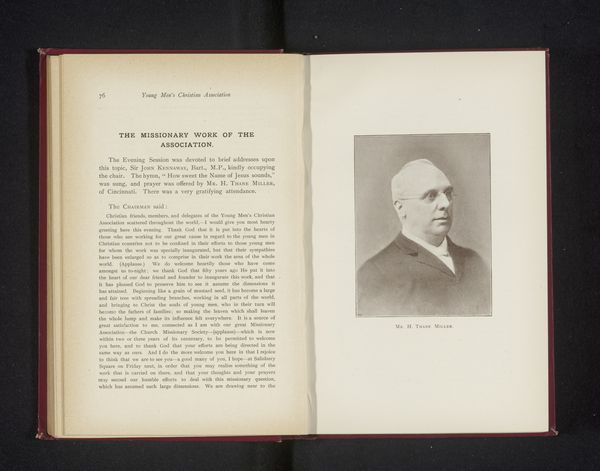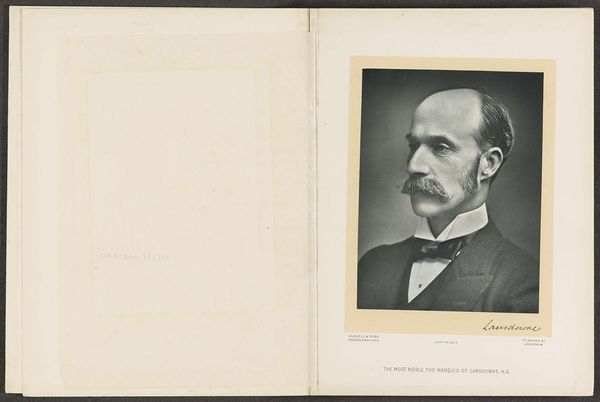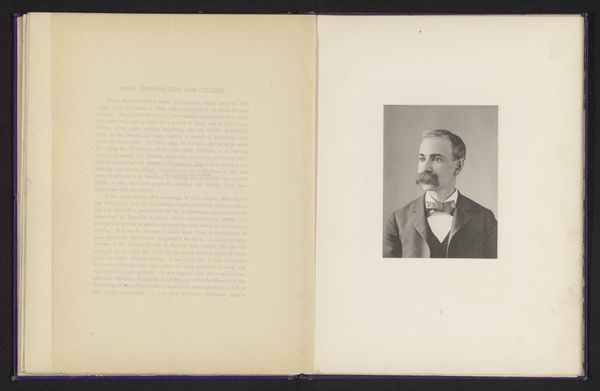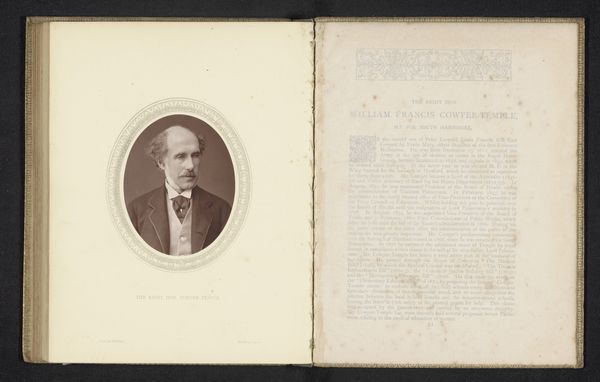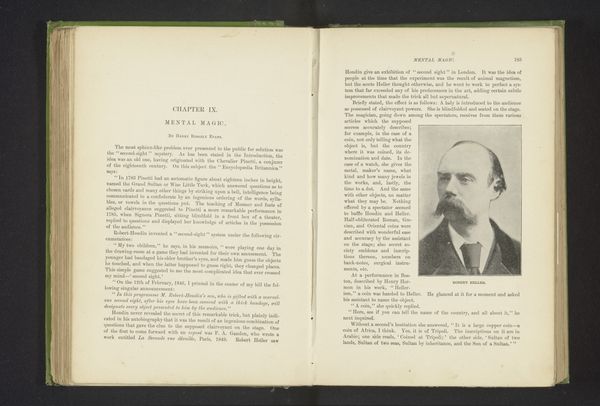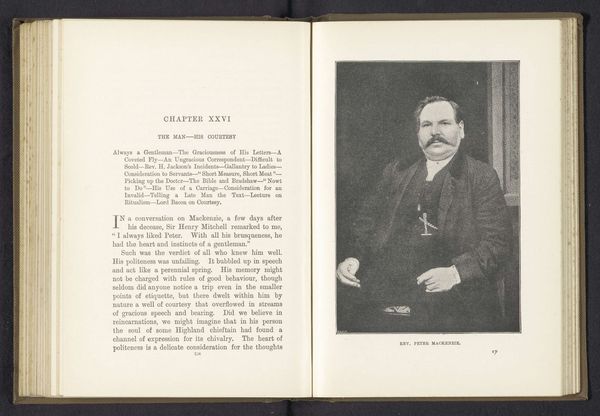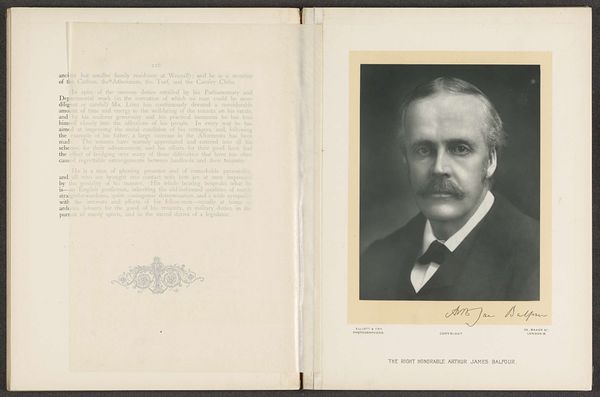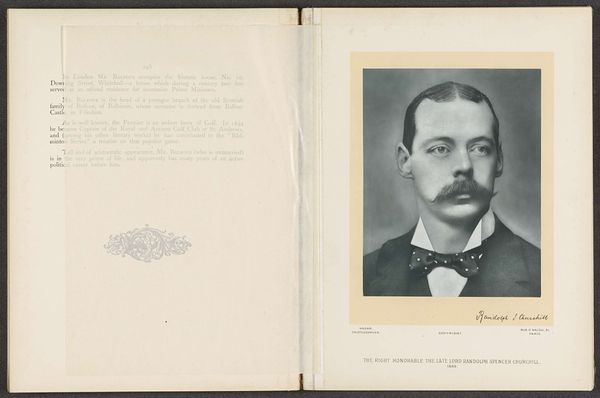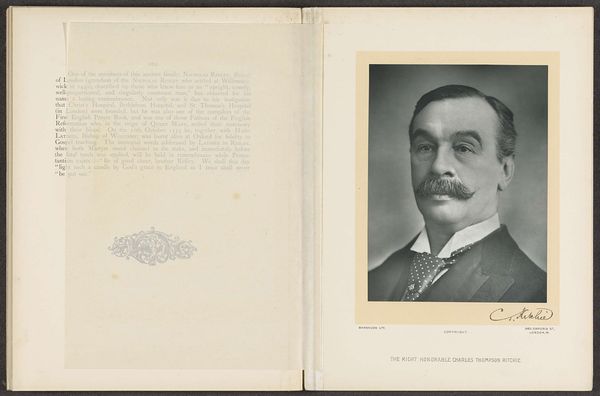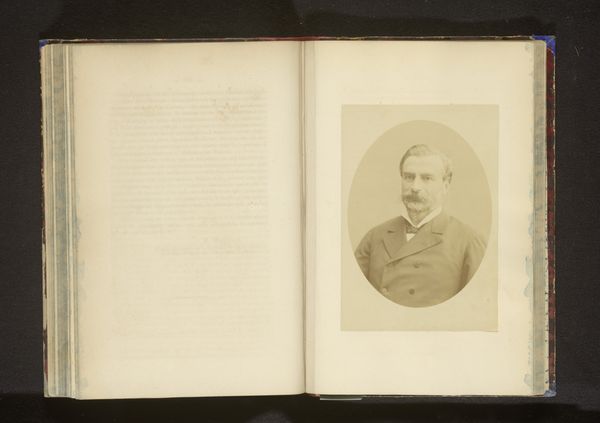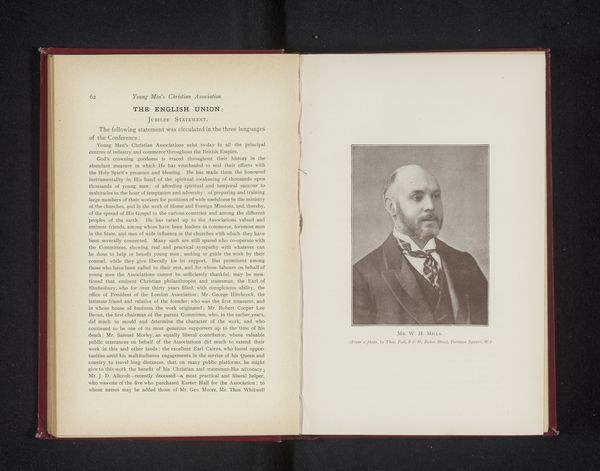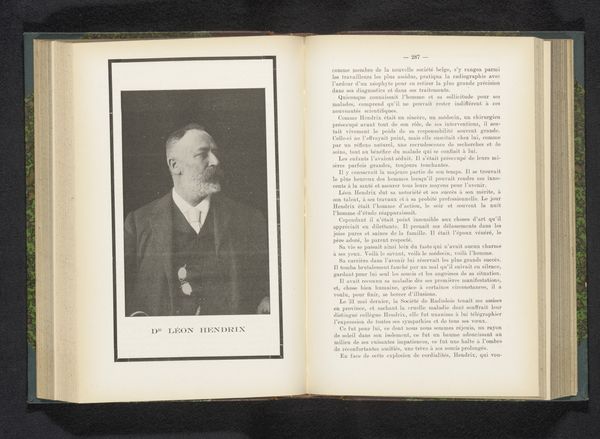
print, photography, gelatin-silver-print
#
portrait
# print
#
photography
#
gelatin-silver-print
#
realism
Dimensions: height 227 mm, width 171 mm
Copyright: Rijks Museum: Open Domain
Curator: This is a gelatin silver print titled "The Right Honorable Walter Hume Long," created between 1893 and 1903 by Elliott & Fry. Editor: The profile gives me the impression of resolute control. I think it communicates immense power. The man’s got this very still and assured gaze. Curator: Right, Elliott & Fry specialized in portraits of influential figures, solidifying their status and legacies through photography. Consider how they shaped visual representations of authority in the British Empire. The side profile seems to function almost like a coin of the realm. Editor: A coin indeed! And that very deliberate decision highlights not just Long’s individuality but also the patriarchal structures from which it springs. A history etched in sharp focus of gendered hierarchies and social dominance. This portrait perpetuates an image of stoic governance and perhaps, obscured accountability. The pose conveys all the weight and privilege attached to figures such as this in the late 19th and early 20th century. Curator: Think of the symbolism behind the meticulously styled mustache and the impeccably tailored suit. It presents an individual deeply embedded within specific cultural ideals. Each element signals belonging and the continuity of a certain lineage or set of societal expectations. Editor: Exactly, and in that cultivated image, what’s concealed? Consider Long’s role in colonial administration, specifically in Ireland, where his policies had profound implications. Can portraiture, by its very nature, act as a tool that glorifies even while masking uncomfortable truths? What does realism hide? Curator: Absolutely. Photography offered a seemingly objective record. However, the choices of pose, lighting, and composition all work together to construct a carefully curated identity. Editor: It seems an intentional narrative is at play, that this is an exercise in the propagation of control through carefully rendered light and shadow, as we reckon with historical figures and reflect upon art's role in social structures. Curator: I agree. Thinking through visual strategies gives rise to deeper reflections on permanence and legacy within institutional frameworks, offering complex layers that ask many relevant questions about power today. Editor: Well, that is precisely the vital role and charge of interrogating historical representation—who it includes, and who it consigns to the shadows.
Comments
No comments
Be the first to comment and join the conversation on the ultimate creative platform.
